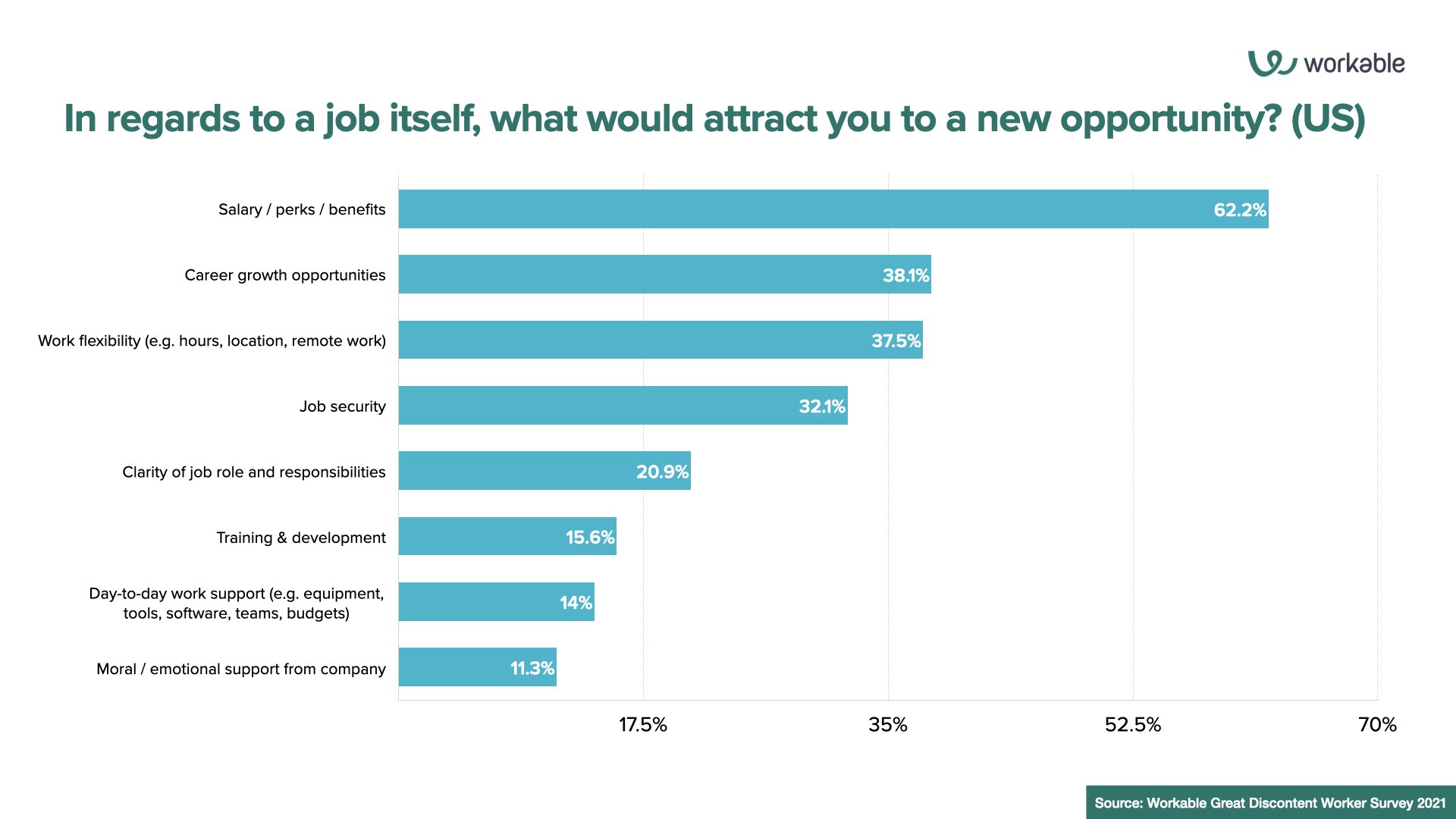Hiring at scale in tech for 2022: A top CPO shares her tips
How do you hire en masse if you’re a SMB-sized Fintech company operating out of Atlanta, operating in a very competitive tech space? The Chief People Officer at Relay Payments has taken on that challenge with bells on, and she sat down with us to share her expertise.

As the company CPO, Amy Zimmerman’s in charge of hiring at scale at Relay Payments, a company in Atlanta, Georgia, that bills itself as an end-to-end payment solution for the logistics industry. The company’s been in existence for about three years and their 100-strong workforce is dispersed throughout the country and internationally – particularly in Ukraine where, Amy says, there are some very talented engineers.
And there’s a lot of work to be done yet. One of Amy’s core objectives going into 2022 is to maintain employee retention and engagement while at the same time tripling the size of the business throughout the year.
In her words: “We’re going to have some enormous growth.”
In the midst of all of that is keeping her team members – both current and future – motivated.
This means, she says, “investing in all of our people to ensure that our culture is one that everybody’s super excited to be a part of and where they can grow their careers and do some of the best work of their lives, and have a lot of fun in the process.”
Doing that in a high-volume tech hiring space is a big undertaking – but she’s succeeding in the venture with a combination of expertise and street smarts.
On surviving the Big Quit
One of the significant developments of 2021 is, of course, the Great Resignation in the United States. Quit rates in the country are at an unprecedented high – reaching as high as 3% of the total working population with upwards of four million workers handing in their notice every month from July 2021 to November 2021.
Add to that an increasingly loud voice among younger workers about their disillusion with current work culture – so succinctly and blatantly on display in Reddit’s Antiwork community (which employers do need to pay attention to).
While obvious, this does signal a clear shift in the talent market. The onus is no longer on candidates to prove their worth to an employer; it’s now on the employer to position themselves as a place where people want to work. So, the question bears asking: what’s the employee value proposition that you can offer to make your job opportunity more attractive to a prospective employee?
For Amy, that value prop includes the working environment that you’re creating for them.
“I think the trend in 2022 is that people are going to look for companies that want to invest in them,” Amy says. “They’re going to look for companies that are flexible and aren’t going to require that they go into an office that they don’t want to go into, that will continue to afford them the flexibility that they’ve all grown to appreciate.”
And this isn’t going to end anytime soon. In fact, it marks a paradigm shift that employers need to adapt to. The Great Discontent report released in mid-2021 shows that flexible work options is high up the list of things that candidates value in a job, with 37.5% of US workers saying it’s one value proposition that would attract them to a new opportunity.
And SMBs that think about their employees first are the ones that’ll get ahead in the new talent game, says Amy.
“Companies are starting to realize how important engagement and investment is in their people,” she explains. “And those are the companies that are winning. And so if you were to talk to those companies, they would probably report lower than market averages in terms of loss. And the reason is because they have the formula. They understand what they need to do.”
Amy does offer a caveat – this needs to be done in a way that supports both ends of the equation.
“[Employers] have to create a trusting environment and a supportive environment and still be able to drive productivity and all the things that are core and critical to the business in an effective way. So I realize that there’s a balancing act here. Employers want to be able to maximize the return from the people.”
There’s tangible proof of the ROI in all this. A 2017 Gallup study finds that highly engaged employees lead to a 17% increase in company productivity, and 24% less turnover in companies in high-turnover sectors.
Amy doubles down on that message – because of that clear ROI, companies need to put in the work to meet those new expectations in the talent market.
“[That’s the] balancing act for 2022 that people really have to figure out.”
On investing in your workers
So how exactly do you ‘invest’ in your people? One area surging in popularity in 2022 is learning and development. In a survey commissioned by Workable and TalentLMS, 91% of tech workers want more learning opportunities from their current employers and 58% cited “skills development” as one criteria in choosing who they want to work for. It’s also a top motivator for tech employees.
And there are other ways to attract and engage employees – Amy shares a few more with us.
The value of connection
Amy stressed several times the importance of ensuring that workers feel connected to the company, whether that’s in a remote environment or otherwise.
“First of all, you have a full-time person dedicated to building the community, whether it’s different activities, whether it’s different communication strategies; there’s a number of different things that have to happen in order for that to be done effectively.”
We’re humans after all – the sense of community in the workplace can be a powerful thing.
The value of compensation
In the above-mentioned Great Discontent worker survey, 63% of workers cited salary as the reason why they’re looking elsewhere for a new job – and 62% say it’s the top factor in their decision to move to a new job.
It’s clear: companies must think about compensation in their value proposition.
“I do think you have to pay people competitively for the market, for their job. And so if you’re underpaying people and you’ve gotten away with it so far, you probably won’t continue to get away with it because people are starting to realize what they’re worth because of how hot the market is.”
This doesn’t mean giving raises across the board, she cautions. It’s more about fair market value.
“You have to pay people what the market suggests they’re worth or they’ll find a company that will.”
The value of people
Ultimately, whether it’s salary, learning & development, or connectivity, what people officers need to be thinking about is the ‘people’ factor. Employees are people too.
“If you’re treating people the way they want to be treated and they feel connected to your mission and connected to the business, they aren’t leaving. People that are leaving because they don’t feel connected. They don’t feel appreciated and they feel like there’s better opportunities for them.”
When your employees take pride in what they do and feel part of a larger mission, that can be even more motivating than a straight-up higher salary – if you’re one SMB that may be challenged in your ability to offer higher wages, this can be a good workaround.
On proactively sourcing candidates
Now, let’s get to the other challenge of the Great Resignation – the dwindling number of candidates that we’re seeing in our Hiring Pulse data and elsewhere. When you take a month’s candidates per hire and compare it with the average CPH of the previous three months, there was a negative trend in that data every single month in 2021:
It’s doubly a challenge for companies like the one Amy works at when high-volume hiring is part of the overall company strategy.
“We don’t have much of an employer brand [because] the company’s only three years old. And so our lower candidate pipeline, I would attribute to not having a strong employer brand because we’re a new company.”
But that means the work is cut out for Relay Payment’s recruitment team, which has resorted to fresh strategies to bring new candidates into the hiring process under Amy’s leadership – at high volume too.
“We get a lot of hires from referrals. I would say 30% of our hires in 2021 were referral-based,” Amy says, adding that they offer bonuses to team members who have successfully referred a candidate who ultimately gets hired.
The lack of a strong, recognizable employer brand is a challenge facing many SMBs, and Amy is well aware of that. She has ways to get around that.
“Our recruiters have had to work really hard to source candidates proactively because people don’t know us well enough to have a big application pipeline.”
So how do you do that? A ton of stuff, says Amy, who cites LinkedIn Recruiter – which she admits is expensive – as a tool to get the word out about a job, and external recruiters when they need to make a niche hire or when time is of the essence. Searching for candidates in Google using related keywords is also an effective strategy.
On growing the team that grows teams
But that’s a lot of work, of course. Amy has a solution for that: Hire more recruiters.
“I actually just doubled the size of my recruiting team in the last week,” she says. “I hired my first dedicated recruiter last summer. I hired a second recruiter in October [2021] and I just hired two [in early January 2022] that will start [in February]. So I’ve gone from one recruiter to four in like eight months.”
The reason being – if you have more team members dedicated to the specific goals in recruitment, you’ll draw more applicants for your open roles.
“The volume of people that you’ve got building your brand and sourcing and building pipelines will also help generate an enormous amount of activity as compared to having fewer people.”
“The volume of people that you’ve got building your brand and sourcing and building pipelines will also help generate an enormous amount of activity as compared to having fewer people.”
Anyone in sales and marketing will understand Amy’s thinking process here. If you want to see increased conversions (i.e. hires), you not only have to bring in the right kind of candidate via referrals and online search – you also have to bring in more candidates.
“For us, it’s about bigger pipelines. We want bigger top of funnel. So how do you invest to get your top of funnel big enough, such that if you have 90 of a specific type of role that you want to hire in a year? [This] is what we’re doing with our AE team. We’re going to add 90 AEs [in 2022].”
And even with the candidates-per-hire metric steadily dropping month over month in 2021 and 2022, any SMB worth their salt – including Relay Payments – will want to have a healthy selection of candidates for any given role. Amy is vividly aware of that.
“If you do the math to back into 90 hires, what do you need your funnel to be? It’s gotta be enormous.”
That’s hiring and retention at scale in Amy’s world. What’s yours? Share your workplace story with us and you may see it get published!










